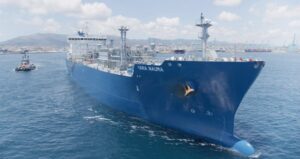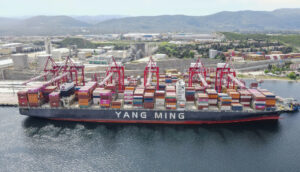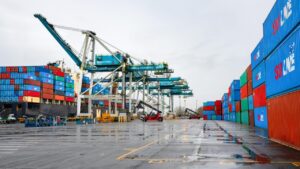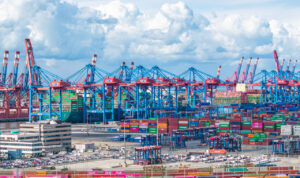In response to an ongoing prolonged drought, the Panama Canal Authority (ACP) has recently revealed its decision to extend limitations on the maximum depth allowed for ships passing through the canal.
Additionally, commencing on 30 July the daily transit capacity of the Panama Canal will be modified to accommodate an average of 32 ocean-going vessels per day, reported Reuters.
Among these, 10 vessels will utilise the neo-Panamax locks, while 22 vessels will pass through the Panamax locks.
The ACP stated that an average of 35-36 vessels generally cross the canal on a daily basis during Panama’s rainy season, with each crossing using some 51 million gallons of water. Nevertheless, the past two months, May and June, recorded an average of merely 32.58 and 32.13 transits per day, respectively.
The Panama Canal Authority (ACP) has confirmed that neo-Panamax container ships will maintain a depth limit of 44 feet (13.41 metres).
According to Reuters, the authority postponed further restrictions in June that would have seen depth limits rise by half a foot. This would have seen ships carrying lighter loads to float higher.
READ: Panama Canal postpones depth restrictions following rainfall
The Panama Canal is one of the most vital of all shipping passages worldwide, connecting the Atlantic and Pacific Oceans. Approximately 3.5 per cent of global maritime trade traverses the 80-kilometre inter-oceanic waterway.
As long as the weather conditions persist, the ACP said in a statement that the depth limit will remain unchanged from the current level.
“As part of a worldwide phenomenon, in the last six months, the Canal has experienced an extended dry season with high levels of evaporation, with a high probability of an El Nino condition before the end of this calendar year,” the ACP said.
READ: Containership catches fire in Panama Canal
In July, Panama usually experiences heavy rains, but the current absence of precipitation has been described by the canal authority as “historically unprecedented”.
To address this situation and prepare for potential long-term impacts of climate change, the canal has already implemented water-efficiency measures since the start of the year.









